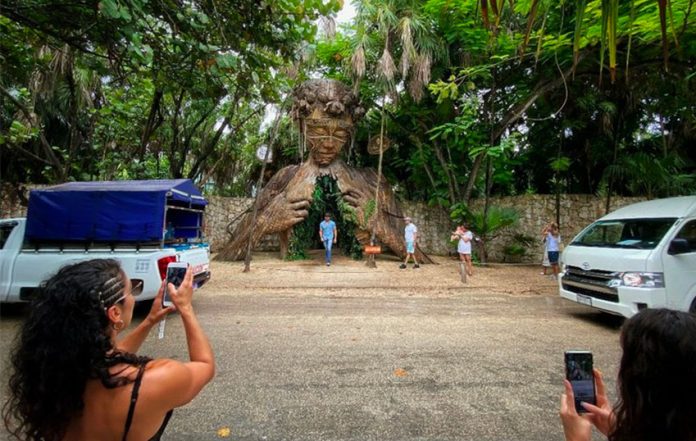Hotel occupancy in Tulum, Quintana Roo, is currently at its highest level since the economic reopening, the resort town’s hotel association president said Sunday.
David Ortiz Mena said that 32% of rooms are currently occupied, noting that most visitors are staying in hotels and resorts located on or near the beach.
He said that some hotels remain closed and that those that have opened are operating at reduced capacity.
The Bahía Principe hotel, located about 25 kilometers north of the town of Tulum near Akumal, has only opened 750 rooms out of almost 4,000, Ortiz said.
The vast majority of hotels in the Tulum coastal zone – the town proper is located about five kilometers inland – have reopened and some have occupancy of close to 60%, he said.
“Only 4% of hotels in that area are still closed,” Ortiz said.
The hotel association chief said that he expects occupancy levels to increase further this month despite September normally being part of the low season. He also said that many tourists are choosing to stay longer than the average 3 1/2-day stay.
He said that Quintana Roo’s designation as a yellow-light state according to the federal government’s stoplight system to assess the risk of coronavirus infection is welcome news as it allows hotels and restaurants to increase their capacity. Ortiz highlighted that archaeological sites and beaches in Tulum are also now open at reduced capacity.
However, he noted that bars in the Caribbean coast municipality have not yet been allowed to reopen. As a result, Tulum has recently felt like the Tulum of old – “a lot more rest and less partying,” Ortiz said.
While he agreed that bars shouldn’t yet reopen, the hotel association chief said that authorities should increase the limit on the number of people allowed to attend events such as weddings, which is currently set at 50.
Weddings in Tulum are big business but the current limit on guests is a deterrent, Ortiz said, adding that there are venues with the capacity to host larger numbers of people while ensuring that social distancing recommendations are observed.
While predicting that tourism will continue to increase, Ortiz said that Tulum’s market remains limited because flights from Europe to Cancún are still well below pre-pandemic levels. Canadians are also not currently traveling in the numbers tourism operators would like, he said.
Travelers who do make it to Tulum, as well as residents, are being encouraged to use a face mask as part of the Quintana Roo Tourism Promotion Council’s “Wear to Care” campaign.
“Despite [being allocated] a yellow light, it’s important that we keep working to send a safe image of our destination. We mustn’t relax the health measures,” Ortiz said.
Source: La Jornada (sp)
